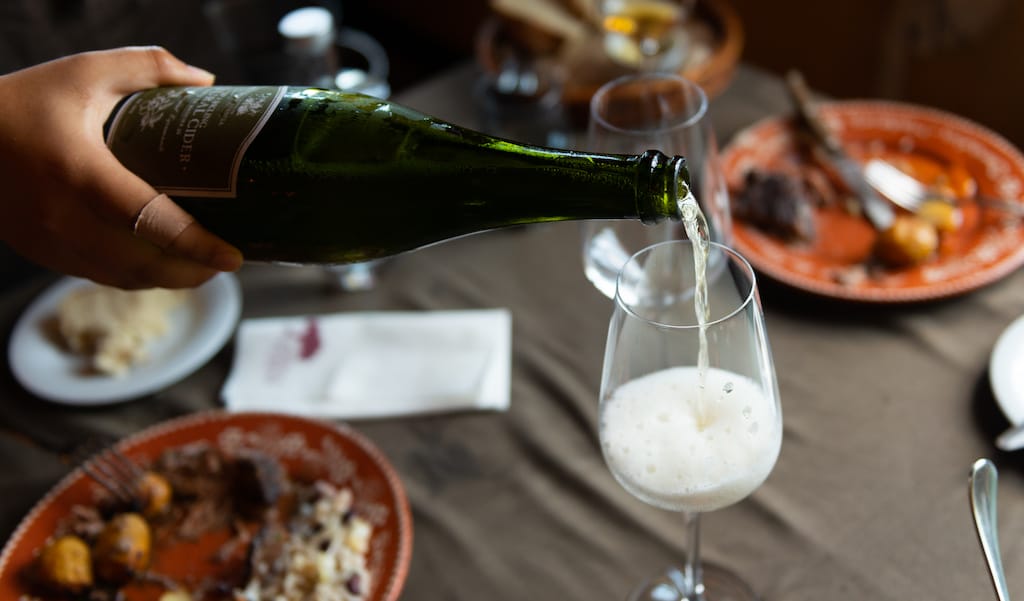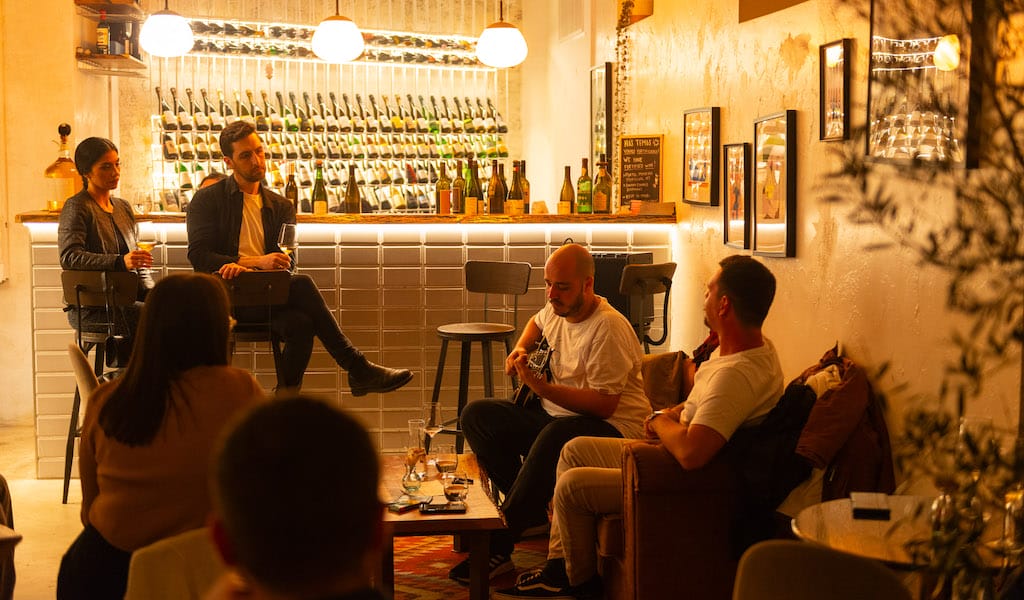Head due north from Portugal, and you’ll encounter Asturias, a region of Spain with a deep tradition of producing and drinking cider. Shift just east from there, and Spain’s Basque country has its own unique apple-based drink, known as sagardoa. And of course, France’s Atlantic coast has a longstanding, sophisticated tradition of turning apples and pears into alcohol.
Back in Portugal, craft cider is, well, a lot harder to find. In recent years, commercial brands such as Bandida do Pomar – part of the company that produces Sagres beer and other products – have become common, but the drink is almost a novelty.
What happened to cider in Portugal?
“Nobody knows exactly why it disappeared,” explains Pedro Paiva, the man behind Faca nos Dentes, a cider made in Minho, in Portugal’s far north, via email. Paiva is obsessed with this question, and scans archives and libraries across Portugal for mentions of apples and cider – as well as the northern Portuguese countryside for unique apple varieties. His current theory for the disappearance of cider from Portugal is rooted in politics: “I believe it’s due to the agricultural policies that were implemented during the Fascist regime that tried to unify the whole territory under one cultural identity,” he writes. He goes on to explain that this emphasis on monoculture – in particular, on grapes and wine production – squeezed out the smaller, more diverse traditional farming model, in which people who had a few apple and pear trees used to produce cider on a small scale.
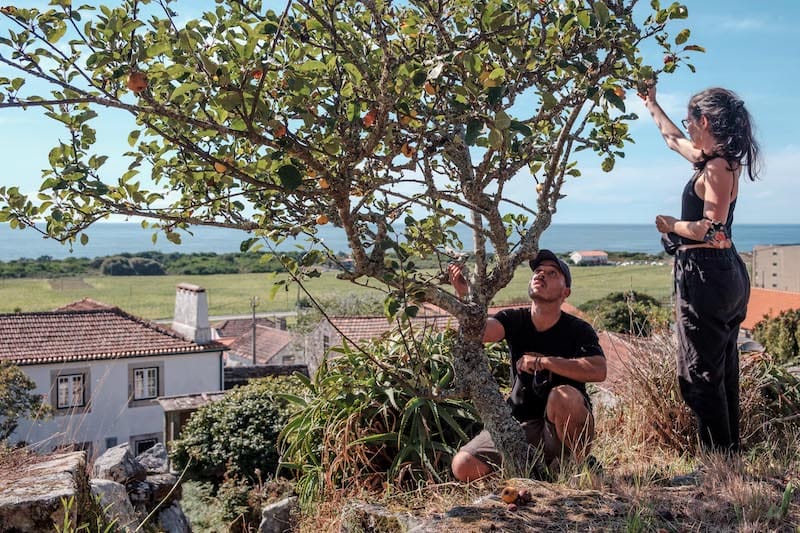
Regardless of how it disappeared, today a handful of people are doing their best to breathe life into what remains of Portugal’s cider culture. Paiva is almost certainly the most enthusiastic example of this.
“Initially the idea was to make the whole process without fuel or electric energy,” explains Paiva, of his original vision of cider making. He writes that he ultimately had to give in and buy an electric apple crusher, but this DIY ethos is still reflected in his ciders, which are made from obscure apple varieties he encounters in backyard gardens or small farms in Minho, and which are fermented naturally, with no added yeasts or enzymes. As such, Faca nos Dentes ciders vary from harvest to harvest – even bottle to bottle. Paiva works with Iberian apples and terroir but is also influenced by cider making traditions from Brittany and Normandy, and the cider that results is somewhere in between the two, with a pleasant balance of acidity, sweetness and funkiness.

Although narrow-minded policies may have led to a reduction of agricultural diversity, northern Portugal still holds traces of what used to exist, as a handful of independent cider makers are discovering.
“Minho is a very rich place for apples,” writes Emanuelle Dalla Costa, of Nua Cider, also based in the northern Portuguese region. Porta da Loja (“Cellar Door”), Pipo de Basto (“Basto’s Barrel”), Três ao Prato (“Three on the Plate”), Sangue de Boi (“Bull’s Blood”), Beijo da Rainha (“Queen’s Kiss”), Boa Vontade (“Goodwill”), Malapio, Agral and Verdeal are just some of the 20 heirloom varieties of apples still found in Minho, and that make their way into Nua’s ciders.
Dalla Costa explains that in northern Portugal, cider was traditionally perceived as a stopgap drink, produced and consumed in early fall, before the wine harvest.
“The historical cider in Portugal was made more like wine – we can call it apple wine,” writes Dalla Costa. “We should look for some acidity, a kind of home-made cider, not filtered, compared to modern hard cider.”
Although most of Nua’s ciders reflect this traditional heritage, they also produce a bottle called Hybrid, a blend of apples and berries with an off-tart, funky flavor and a beautiful peach hue.
Portugal’s cider tradition likely has its origins in the north, but this is not the only place it is produced these days. The country’s western region, the coastal zone just north of Lisbon, is the source of fruit for a cider called Sidrada.
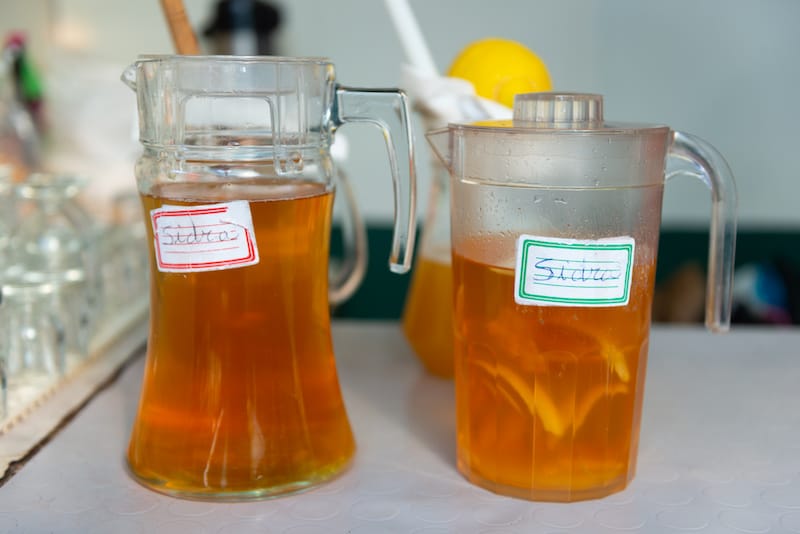
“Although there’s no official historical record of cider [in Portugal’s western zone], there’s oral histories of homemade cider production across the region,” Nuno Clímaco, the cidermaker behind Sidrada, tells us.
The cider makers behind Sidrada take advantage of the west’s reputation as “Portugal’s apple tree,” using Alcobaça apples and Rocha do Oeste pears, both protected agricultural products. This results in ciders with much less carbonation and sweetness than the more commercial brands. For those who miss the bubbles, Sidrada also produce sparkling ciders ranging in flavor from brut to semi-sweet.
Even less restrained by tradition is American Luke Schomer, a winemaker with 14 years of experience in the United States. With a desire to make wines with “very little outside influence,” in 2019 he moved to Portugal and along with his Portuguese wife, created Daughters of Madness, a winery that also happens to produce some very intriguing ciders. While Cider Diver is a relatively conventional craft cider made with apples from northern Portugal, Sea Foam blends hard cider, red wine and berries, and Jellyfish unites cider, rosé and a splash of seawater. The results are delicious drinks that stretch the definition of cider just about as far as it can go.
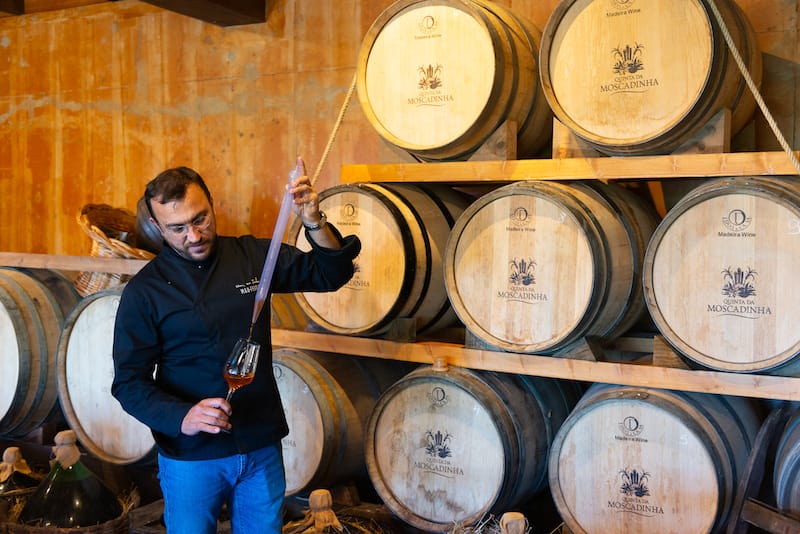
“If I could not move beyond Cider Diver, there would not even be a point of me continuing on in this field,” explains Schomer, who cites American craft beer producers among his influences. “It is about learning and having fun.”
There is one outpost of traditional Portuguese cider production. But paradoxically, it’s found on an island located off the coast of Africa.
“Cider culture survived and it’s alive in the Madeira islands,” writes Pedro Paiva, of Faca nos Dentes, in an email. “Most of the early settlers of the island were people from the north of Portugal and most certainly brought with them the type of agriculture they were familiar with, cider and apple varieties included.”
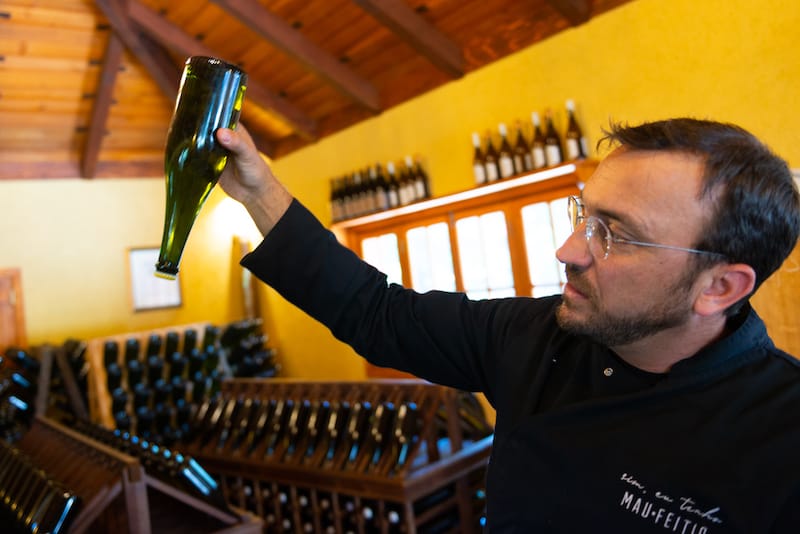
Today, Sidra da Madeira IGP (Indicação Geográfica Protegida, a classification that guarantees that products were produced in a specific region, via the techniques and displaying the characteristics that made them famous) is a protected product. According to the oenologist behind the cider, Regina Pereira Santos, it got its start when mainland Portuguese brought apple trees to the island, an effort to provide fruit for locals and passing ships. At the beginning of the 20th century, locals were found to have been adulterating Madeira wine with apple and pear wine, which led to a prohibition of this drink on the island. People then started fermenting the fresh juice, leading to a small-scale cider industry.
Today, Sidra da Madeira IGP is made from more than 100 estimated varieties of local apples and pears, which are grown on the north and south slopes of Madeira at altitudes above 400 meters. According to Pereira Santos, the cider has a distinct yellow hue and a predominantly tart flavor with “notes of green and ripe apple, quince and citrus fruit, joined by the subtle and sometimes unusual tropicality of passionfruit and an exotic hint of salinity due to the constant play of agricultural fields with the Atlantic breeze.”
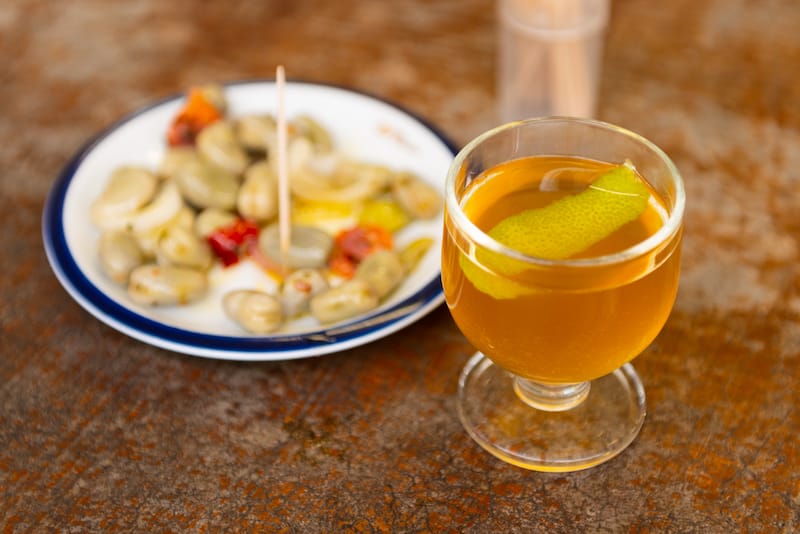
Traditionally, Madeirans drank their cider with lemon peel and a pinch of sugar; visit the Sunday market at Santo da Serra, a cider-producing area in eastern Madeira, as we did, and you can see vendors selling this drink from pitchers. Today, Sidra da Madeira IGP is produced by a number of breweries across the island, and is sold in bottles with a distinctive blue and orange label. Increasingly, producers are attempting to distinguish themselves via branding, with aRRebITa the only brand currently available in mainland Portugal.
Undoubtedly the most progressive cider maker on Madeira is Márcio Nóbrega. He’s the man behind Quinta da Moscadinha, a hotel with a linked restaurant and orchard that produces ciders under the same name. Quinta da Moscadinha’s Sparkling Natural Cider blends apples and pears via the champagne method, while the Aged Cider spends time in Madeira barrels. Yet even more intriguing are the cider experiments that Nobrega conducts in-house that, unfortunately, can’t be sold to the public.
“When phylloxera [a pest that destroyed nearly all of Europe’s vineyards in the late 19th century] hit Europe, we didn’t have grapes, so people on Madeira made wine with apples,” Nobrega tells us in his cellar, where he’s invited us for a tasting. He’s inspired by this legacy, and has been aging various combinations of cider, fortified apple wine and aged Madeira wine in Madeira barrels. The results are discombobulating and delicious – one of the most intriguing drinks we’ve encountered in years – the closest we’ve come to a taste of the past.
Where to buy Portuguese cider in Lisbon
Black Sheep: One of Lisbon’s better wine bars, Nua and Daughters of Madness ciders are often available here.
BOM BOM BOM: This natural wine bar in Graça has a tap with Nua cider.
Cave da Estrela: A tiny bottle shop that frequently stocks bottles of Faca nos Dentes cider.
Cerveja Canil: The Baixa branch of this craft beer bar occasionally stocks Sidrada cider.
Comida Independente: One of Lisbon’s best bottle shops, Daughters of Madness ciders (as well as imported French ciders) are available here.
Do Vigário: This tiny bar in Alfama sells bottles of Sidrada Três Maçās cider.
Mercearia Poço dos Negros: This grocery store occasionally stocks domestic ciders.
MUSA: Lisbon’s coolest craft brewers have collaborated with French brewers La Chouette and organic apples from Normandy to make Peste & Sidra, a slightly sweet, vibrant cider. Not exactly Portuguese, but close.
Pop the Wine: This tiny wine bar/bottle shop sometimes carries Nua and Daughters of Madness ciders.
Vino Vero: This wine bar in Graça has a few bottles of Nua and Daughters of Madness cider.
The Producers
aRRebITa: A cider from Madeira with a typically tart flavor profile.
Daughters of Madness: This producer offers both traditional and more experimental cider drinks.
Faca nos Dentes: Cider made from heirloom varieties sourced in Minho, in the country’s north.
Nua: Made from heirloom apples in Minho, in the country’s north. The Hybrid also contains red fruits.
Quinta da Moscadinha Craft ciders made in Madeira, available only at the eponymous hotel/restaurant.
Sidra Alfa: Dry and sparkling ciders made with apples from Trás-os-Montes, in Portugal’s far north.
Sidra da Madeira IG: A collective of cider producers on the island of Madeira.
Sidrada: This company makes a shortlist of apple and pear ciders using fruit from small producers across western Portugal.
Vadia: This craft brewer based outside of Porto makes ciders from apple and pear concentrates.
 April 10, 2024 Black Sheep Lisboa
April 10, 2024 Black Sheep Lisboa
It was an unusual night. But Black Sheep is, admittedly, an unusual venue.
Lucas […] Posted in Lisbon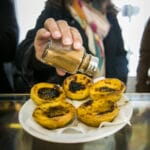 April 4, 2024 DEMO – Lisbon Awakens: A Culinary Crossroads, Reborn
April 4, 2024 DEMO – Lisbon Awakens: A Culinary Crossroads, Reborn
Quick Bite: On this food tour in Lisbon, we’ll experience a cultural feast, tasting some […] Posted in Lisbon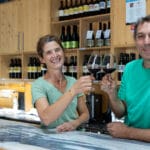 March 13, 2024 Adega Belém
March 13, 2024 Adega Belém
Unlike most capitals, Lisbon has vineyards within its territory, and plenty of vines […] Posted in Lisbon
Austin BushAustin Bush and João Peixoto
Published on July 28, 2023
Related stories
April 10, 2024
LisbonIt was an unusual night. But Black Sheep is, admittedly, an unusual venue. Lucas Ferreira, one of the co-owners of the Lisbon wine bar, had pulled out a guitar and was engaging in a jam session with a former bandmate. For a good 45 minutes, the normally buzzy bar was on pause: the chatter had…
April 4, 2024
LisbonQuick Bite: On this food tour in Lisbon, we’ll experience a cultural feast, tasting some of the most diverse bites of the city’s gastronomy and meeting the people behind them. The oldest city in Western Europe, once the hub of a trading empire that connected Macau in the east to Rio de Janeiro in the…
March 13, 2024
LisbonUnlike most capitals, Lisbon has vineyards within its territory, and plenty of vines within reach in neighboring municipalities, from Sintra to Cascais and Loures. But until 2020, there wasn’t a single winery to be found in the city itself. Adega Belém has remedied this. Located right at the edge of one of the city’s most…







































